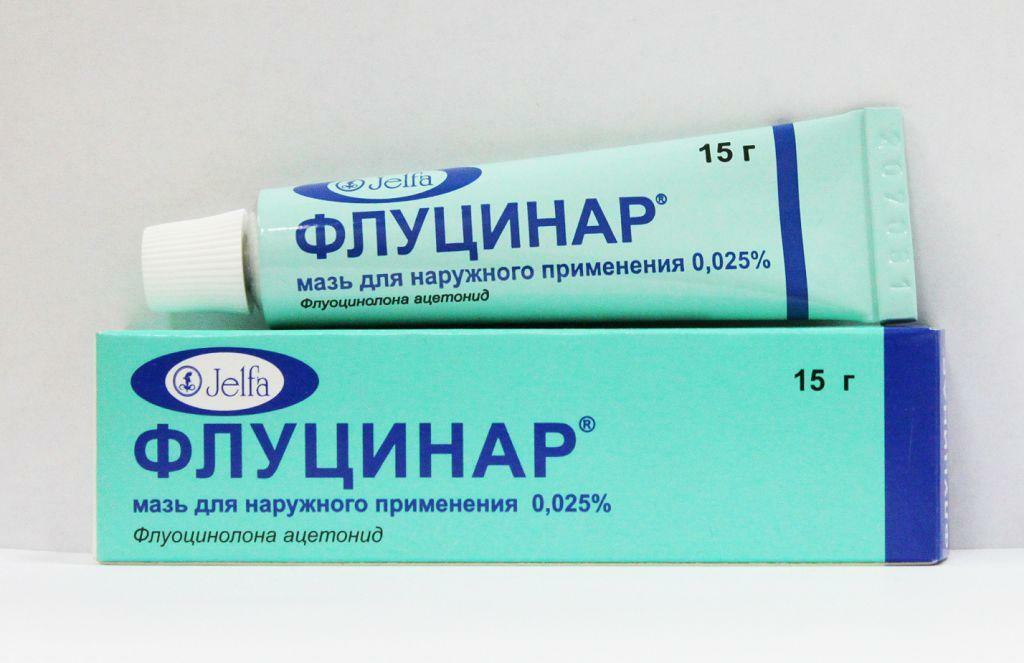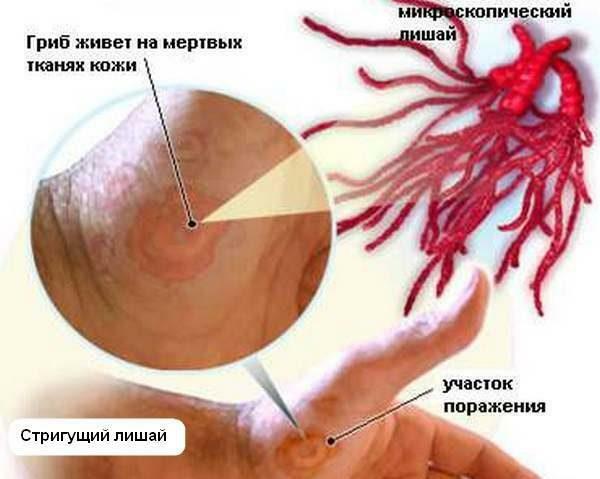Monastic tea is a mixture of herbs and plants that provide antiparasitic, restorative, tonic and anti-inflammatory effects. The remedy is used to enhance the immune functions of the body, cleanse the vessels and liver, strengthen the heart, stimulate the functions of the respiratory system and fight infectious diseases.
The monastery collection in dermatology was widely spread. Herbs rich in biologically active substances, essential oils and tannic acids effectively cope with bacterial and fungal infections of the skin and mucous membranes. A large number of reviews confirms the high effectiveness of the drink in the fight against onychomycosis, a nail fungus having a fungal nature. In order to better understand the mechanism of the action of tea, it is necessary to know which components are included in its composition.
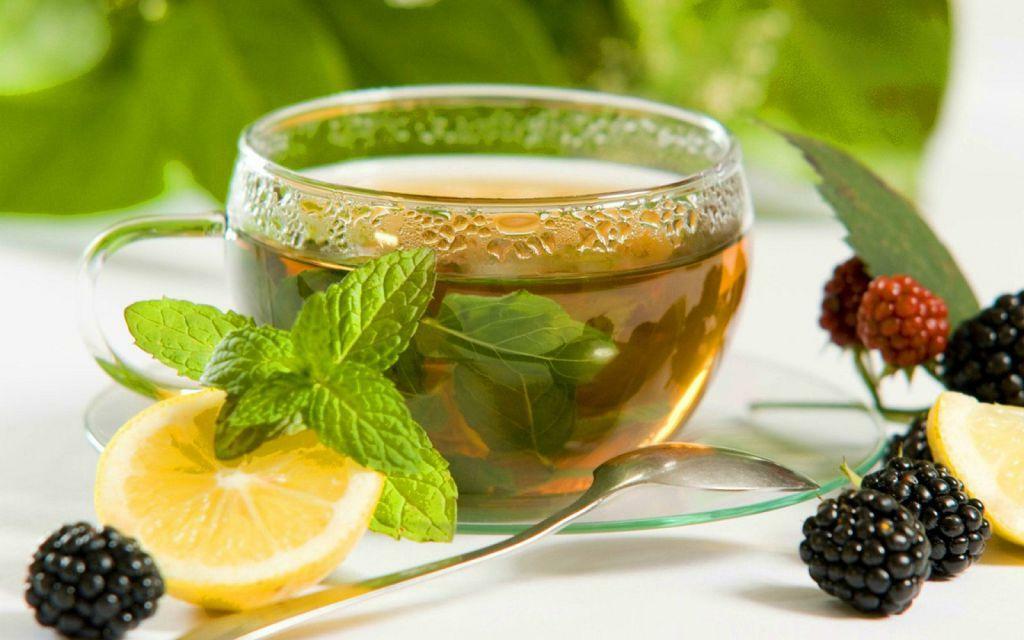
Monastic tea from nail fungus: composition
Content of material
- 1 What is monastic tea?
- 2 The properties of tea in the treatment of fungus
- 3 Composition
- 3.1 Video - Monastic tea
- 4 How to drink tea?
- 5 Can children be given?
- 5.1 Video - Monastic tea from Tolgsky Monastery
- 6 Application during pregnancy and lactation
- 7 Does monastic tea help from nail fungus?
- 8 Let's sum up
What is monastic tea?
Monastic tea is a unique herbal collection, which includes carefully selected plants and fruits with high biological activity. The recipe for tea is known from ancient times. Ancient monks prepared a healing potion and infusions of herbs and plants, but the most convenient and effective way of using was brewing a special collection instead of traditional tea.
Monastic tea now completely repeats the recipe, used several centuries ago, and includes all the ingredients that were included in the "drink of antiquity".Raw materials for its production are grown and harvested in Russia in a monastery in the Altai. Some European companies also produce monastery tea, but the price is several times higher than the Russian equivalent, and the quality remains at the same level.

The monastic tea includes carefully selected plants and fruits with a high biological activity
The properties of tea in the treatment of fungus
Fungal damage of the nail plate is called onychomycosis. Nails with this disease acquire a yellowish hue, fade and crumble. With severe lesions, it is possible to suppuration and spread of infection in healthy epidermal tissues, so it is recommended to treat onychomycosis at an early stage.
Important! Most patients consider fungus a cosmetic defect and do not give due importance to the problem, ignoring the doctor's prescription or even refusing to examine and treat. It is worth remembering that the lack of therapy can lead to the loss of the nail, and in very neglected cases - even to amputation of the phalanx of the finger.
The second reason for the untimely request for medical help is considered by the experts as a psychological factor. Some patients feel embarrassed about their illness and try to be fewer in crowded places, so they are tempted to go to the hospital with the last. Monastic tea in this case will be an excellent solution to the problem, but only on the condition that the disease has appeared recently and is at the initial stage.
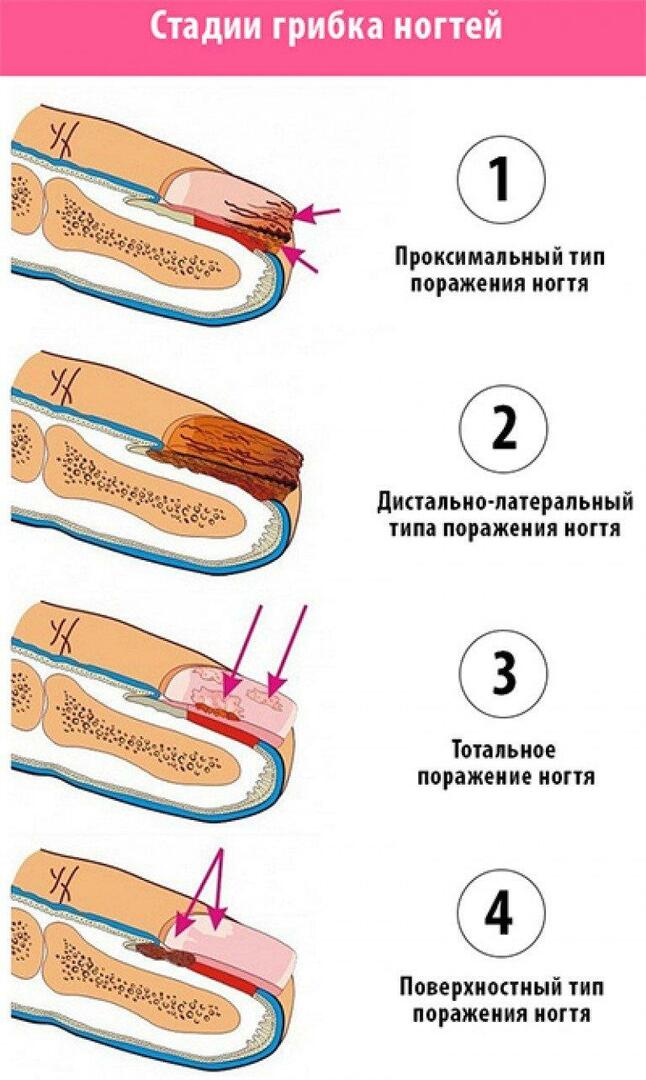
Nail fungus stages
Drug collection as a part of complex therapy has a whole range of positive properties, among them:
- destruction of mold and yeast fungi due to destruction of membrane membrane of pathogenic microorganisms;
- purification of blood vessels and liver from toxins and products of disintegration and vital activity of fungi;
- prevention of secondary infection and damage to healthy tissues and cells;
- protect cells from the aggressive effects of adverse factors;
- strengthening immunity and enhancing the body's defenses( including local immunity);
- is an enrichment of the body with useful elements, which are rarely found in the usual food.
Vitamins and mineral elements improve the recovery of the diseased area after the infection has disappeared and promote the growth of a strong and healthy nail.
Important! The monastic tea itself is not a medicinal product and can not be used to treat onychomycosis. Good results were obtained with the inclusion of the collection in the combination therapy, since herbs enhance the protective functions of the skin and accelerate the action of local and systemic preparations against the fungus.
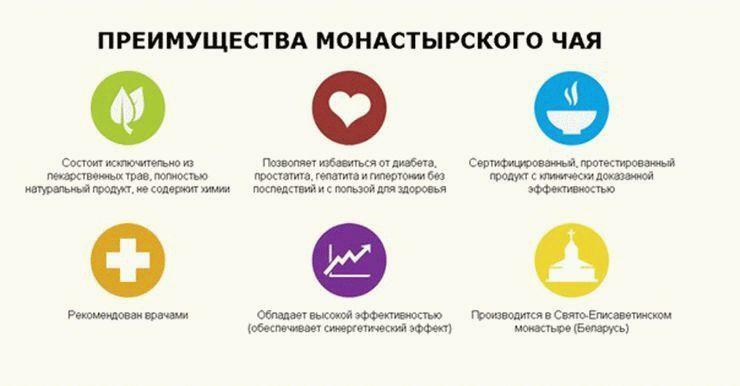
The advantages of monastic tea
The effectiveness of monastic tea in various treatment regimens( according to the research institute of Moscow)
| The treatment regimen used | The positive result of treatment in patients aged 18 to 45 years( as a percentage) |
|---|---|
| Monastic tea | 11% |
| Monastic tea + local remedies( gels, ointments) for combating fungal infection | 38% |
| Monastic tea + topical preparations + systemic medicines for combating onychomycosis( oral tabletski and solutions) | 51% |
These data are considered averages, since the effectiveness of therapy is influenced by many factors: age, presence of chronic diseases, the immune system and the severity of the underlying diagnosis.

The main activities of the monastic tea
The composition of the collection
The undeniable advantage of the monastic tea is a completely natural composition. When it is produced, strong substances and toxic elements are not used, so the beverage rarely causes side effects. Nevertheless, monastic tea is a product with increased allergenic properties( although advertising assures a minimum risk of allergy), since any preparations based on plant raw materials are serious allergens.
An important factor in choosing agents for the treatment of onychomycosis is the fact that the composition of the drink can change constantly. The classic recipe for the collection of nail fungus consists of 10 herbs with a pronounced curative and restorative effect.
- Mint .Peppermint oil contains many ethers that disinfect the body and destroy any pathogenic flora, including fungus, microbes and bacteria. With regular application, mint improves tissue regeneration and speeds up the process of growing a new nail after removing the affected nail plate.
- Calendula .A famous antiseptic. It has a pronounced anti-inflammatory effect, relieves irritation, soothes the skin, increases local protective functions, preventing the penetration of infection into healthy areas.
- Tansy .Tansy extract has a mild stimulating effect on the digestive tract, improves intestinal peristalsis and displays the products of disintegration and vital activity of fungal microorganisms. When used internally tansy helps to adjust the work of the stomach and cleanse blood and lymph from harmful substances and compounds.

Advantages of monastic tea before chemical preparations
- Wormwood bitter .One of the most effective plants for fighting parasites. Broth of wormwood is used for the treatment of helminthiases, fungal lesions and bacterial infections. In moderate doses of wormwood does not cause harm, but with internal bleeding from eating products that include this plant, it is better to refuse.
- Young leaves of birch .They are used to treat skin pathologies, promote hair growth and nourish hair follicles. In dermatology, recipes with birch leaves are used for the treatment of dermatitis, seborrhea and other pathologies of infectious and unspecified etiology.
- Cask .It contains almost all known vitamins and minerals. Has a powerful strengthening effect on the immune system, saturates cells with useful elements, increases the activity of immune cells, is an excellent preventive against parasitic and fungal diseases.
- Salvia .Helps to combat the symptoms of onychomycosis, the main ones of which are sweating and itching. Improves the condition of nails and skin, contributes to the recovery of the affected area after recovery. If the patient needs a surgical removal of the damaged nail, sage will accelerate the healing and regrowth of a healthy plate.
- Wheatage .Reduces the severity of the inflammatory process, destroys bacteria and microbes, disinfects the body, preventing the occurrence of infectious pathologies.
- Yarrow .As part of complex therapy helps stop bleeding after removing the affected nail fungus. Improves the blood supply to the skin, stimulates the regeneration of damaged layers.
- Oak bark .Clears the body's liquid structures from toxins and toxins, destroys bacteria, and helps to remove them from the body.
Important! These herbs have a good therapeutic effect, provided that the pathological process is not very pronounced. If the disease is started, the use of monastic tea should be combined with drug therapy. In some variations of the monastery collection there are other components( burdock, chamomile, turn, elecampane), but the classic recipe is considered more effective.
Video - Monastic Tea
How to drink tea?
Many patients make a mistake when using monastery tea - they make a wrong brew and do not allow to brew. For the therapy to give the best results, it is important to follow the manufacturer's recommendations for the preparation of a medicinal beverage.
- 1 spoonful( without a slide) collecting pour the boiling water and cover with a lid.
- Set for at least 20-30 minutes( until a saturated dark green color appears).
- Strain the infusion through gauze or sieve.
- Drink to an empty stomach.
The duration of treatment should not be less than 3 weeks. To achieve a good therapeutic result, it is recommended to drink monastic tea for 1 month. The drink can be included in a combined scheme of treatment of onychomycosis or taken for prophylaxis 3-4 times a year for 10-14 days.
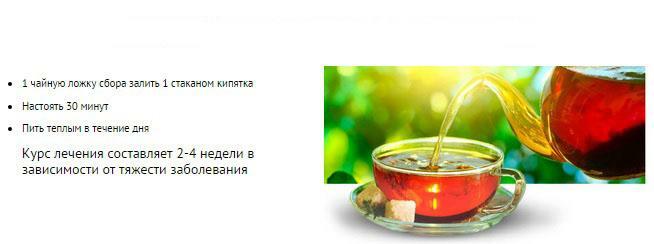
How to drink monastic tea
Can I give children?
The monastic collection has no age restrictions for use. Experts agree that tea can be given to children from the age of two. Drink is an excellent restorative and tonic, therefore suitable for children with weakened immunity and often ill with respiratory diseases. A large number of vitamins and minerals, as well as a pronounced antibacterial and antimicrobial effect make monastic tea a good addition to the baby's diet.
Duration of use in children is from 10 to 20 days. For the prevention of parasitic diseases, it is recommended to have course treatment 2 times a year.
Video - Monastic tea from Tolgsky Monastery
Application during pregnancy and lactation
Given the high content of plant material in the tea, the manufacturer does not recommend taking it during child bearing or breast-feeding. Despite the absence of negative feedback about the use of the monastery collection during pregnancy, treat the product with caution. The fact is that the wormwood, which is part of the tea, can have embryotoxic and teratogenic effects when consumed in large quantities, which is fraught with congenital defects and pathologies in the fetus.
The active components of tea are excreted in breast milk, therefore, until the baby reaches the age of six months, it is also not recommended to use a monastic collection( in any variation of the composition) due to the increased risk of allergic reactions in the baby.
Important! If necessary, monastic tea can be taken during pregnancy and lactation, but treatment should be under the constant supervision of a gynecologist and pediatrician.
Does monastic tea help the nail fungus?
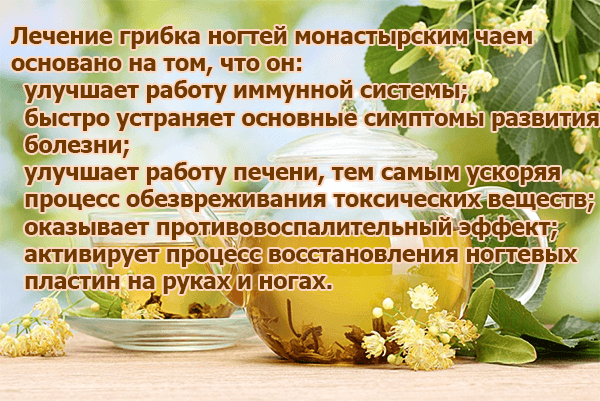
Nail fungus treatment with monastic tea
Nail fungus is a serious infectious disease that requires comprehensive treatment and strict adherence to personal hygiene measures. In most cases, the patient has to take systemic drugs of a wide spectrum of action, since local drugs in the form of ointments and gels can not cope with the pathogenic flora. The use of monastic tea as the only medicinal component will not bring the desired result and can lead to a deterioration of well-being due to lost time.
Specialists in the field of dermatology do not share the general euphoria of the wonderful properties of this drink and consider it a good addition to the main treatment. Ingredients of the collection have a positive effect on the protective functions of the body and help to cope faster with the disease, but do not cure it.
Summing up
Monastic tea is a useful vegetable collection containing a large number of medicinal herbs. Tea can be an excellent addition to complex treatment, but in no case replaces. To accelerate recovery, it is necessary to follow the instructions for the use of tea, as well as to fulfill all the prescriptions of the attending physician and to undergo the necessary examinations on time.

Monastic tea - a useful vegetable collection
The universal recommendations of specialists can help:
- to wash the feet 2 times a day( for the period of active treatment) with warm water;
- should not be abused with detergents and soap, as they wash off the natural protective barrier and dry the skin;
- if onychomycosis occurs on the feet, it is important to perform antiseptic treatment of the inner surface of home and street footwear daily( using special sprays and lotions);
- to avoid infection of other family members, you should not walk around the house barefoot or in open shoes;
- treatment of nails with ointments is best carried out with the help of cotton swabs or disks, so as not to infect the infection on healthy skin areas.
A prerequisite for safe treatment is strict adherence to the dosages specified in the instructions. You can drink monastery tea 1 time per day. If the daily dosage is exceeded, a toxic effect( cumulative) is possible due to the presence of wormwood in the composition. If the doctor has prescribed pills for internal use, do not neglect the recommendations: untimely treatment of onychomycosis is one of the reasons for the forced amputation of the phalanx of the finger and removal of the affected nail plate.


